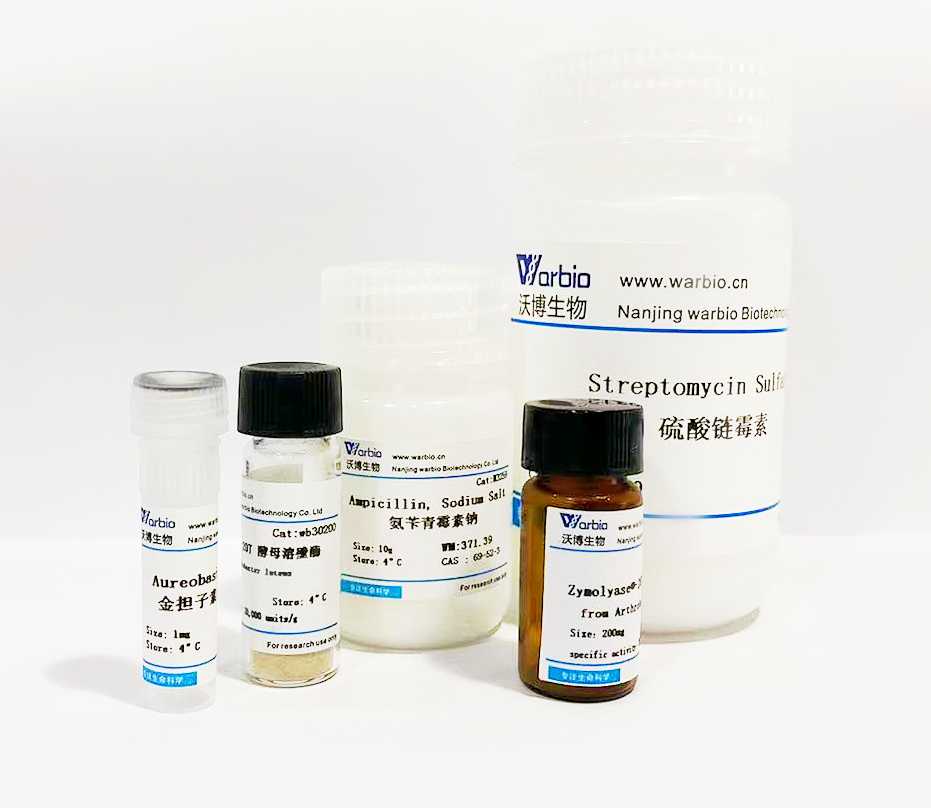

PR-619 (PR 619)
| 货号 | IUP1061 | 售价(元) | 1055 |
| 规格 | 1mg | CAS号 | 2645-32-1 |
- 产品简介
- 相关产品
货号
名称
规格
价格
IUP1061-0001MG
PR-619
1MG
1055
IUP1061-0005MG
PR-619
5MG
2985
产品简介:
(2,6-二氨基-5-硫氰基吡啶-3-基)硫氰酸酯,也称为PR-619,是一种广谱可逆且细胞渗透性的去泛素化酶(DUB)抑制剂[1][2][3],能有效抑制几乎所有半胱氨酸蛋白酶DUB的活性[4],但对DUB表现出选择性而非其他蛋白酶,如钙蛋白酶1或卡特普汀[3]。PR-619以低微米范围内的EC50值诱导(肿瘤)细胞死亡[1]。 去泛素化酶(DUB),也称为泛素异构酶或去泛素化蛋白,执行目标蛋白的去泛素化。泛素化后,随后被蛋白酶体降解,是泛素蛋白质体系(UPS)的过程。泛素蛋白质体系(UPS)和/或自噬途径的失灵可能导致蛋白聚集,是许多神经退行性疾病的病理标志[2]。 在OLN-t40细胞中,建议PR-619的细胞毒性浓度范围为7-10μM,24小时处理后,半数最大细胞毒性在9-10μM PR-619浓度下观察到。类似于MG-132,PR-619在7-12.5μM的浓度范围内导致泛素化蛋白的丰度增加。在OLN-t40细胞中测试时,PR-619不像MG-132一样抑制细胞裂解液中蛋白酶体的酶活性,但只有在存活细胞中才会被摄取[2]。一种体外系统显示,PR-619能稳定微管网络并导致小型tau蛋白团聚体围绕微管组织中心[5]。 目前还没有任何关于动物体内治疗的结果。
产品性质:
Cas No.;2645-32-1
别名;2,6-二氨基-3,5-二硫氰基吡啶
化学名;(2,6-diamino-5-thiocyanatopyridin-3-yl) thiocyanate
Canonical SMILES:C1=C(C(=NC(=C1SC#N)N)N)SC#N
分子式:C7H5N5S2
分子量:223.28
溶解度:≥ 11.15mg/mL in DMSO
储存条件:Store at -20°C
注意事项:
为了您的安全和健康,请穿实验服并戴一次性手套操作。
References:
[1]. Mikael Altun, Holger B. Kramer, Lianne I. Willems, et al. Activity-Based Chemical Proteomics Accelerates Inhibitor Development for Deubiquitylating Enzymes. Chemistry & Biology, 2011, 18(11): 1401-1412.
[2]. Veronika Seiberlicha, Olaf Goldbauma, Victoria Zhukareva, et al. The small molecule inhibitor PR-619 of deubiquitinating enzymes affects the microtubule network and causes protein aggregate formation in neural cells: Implications for neurodegenerative diseases. Biochimica et Biophysica Acta (BBA) - Molecular Cell Research, 2012, 1823(11): 2057–2068.
[3]. Iraia García-Santisteban, Godefridus J Peters, Elisa Giovannetti, et al. USP1 deubiquitinase: cellular functions, regulatory mechanisms and emerging potential as target in cancer therapy. Molecular Cancer, 2013, 12:91.
[4]. Maria Stella Ritorto, Richard Ewan, Ana B. Perez-Oliva, et al. Screening of DUB activity and specificity by MALDI-TOF mass spectrometry. Nature Communications, 2014, 5:4763.
[5]. Laura J Blair, Bo Zhang and Chad A Dickey, et al. Potential synergy between tau aggregation inhibitors and tau chaperone modulators. Alzheimer's Research & Therapy, 2013, 5:41.

